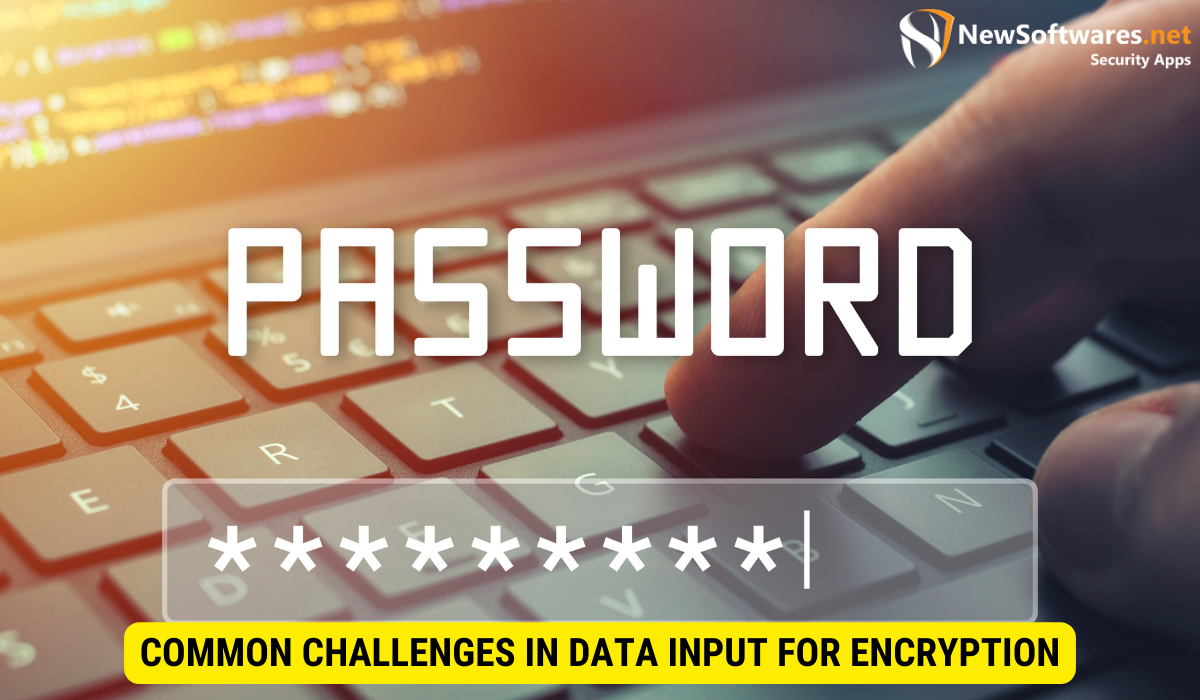The data type is crucial in determining encryption algorithm selection and efficiency. Different data types, such as textual, numerical, and binary, require specific encryption techniques. Data preprocessing techniques like normalization and data conversion enhance encryption efficiency. Common challenges in data input for encryption include dealing with large data sets and handling mixed data types.
In cybersecurity, encryption plays a central role in keeping sensitive information secure. Encryption algorithms are at the heart of this process, but understanding the data input for these algorithms is equally important. The data type plays a significant role in determining encryption efficiency and algorithm selection. Together, we will delve into the fundamentals of encryption algorithms, explore different data types, examine the relationship between data type and encryption algorithms, discuss data preprocessing techniques, and address common challenges in data input for encryption.
The Basics of Encryption Algorithms

Encryption algorithms are complex mathematical processes that transform data into unreadable or undecipherable without the appropriate decryption key. These algorithms employ various techniques and methodologies to ensure encrypted data’s confidentiality, integrity, and availability.
Encryption algorithms typically consist of two primary components: the encryption function, which performs the actual encryption process, and the decryption function, which reverses the encryption process to retrieve the original data. Common encryption algorithms include Advanced Encryption Standard (AES), Data Encryption Standard (DES), and Rivest Cipher (RC4).
Defining Encryption Algorithms
Encryption algorithms are mathematical functions that use a key to transform input data into encrypted output data. They provide security by making it difficult for unauthorized individuals to access the original data without the corresponding decryption key.
These algorithms are designed to ensure the confidentiality of sensitive information. Encryption algorithms protect the data from unauthorized access by transforming it into an unreadable format. This is particularly important in today’s digital age, where cyber threats are prevalent and data breaches can have severe consequences.
Encryption algorithms employ various cryptographic techniques to enhance the security of the encryption process. These techniques include Substitution, permutation, diffusion, and confusion. Substitution involves replacing specific data elements with other elements, while permutation rearranges the data to create a more randomized pattern. Diffusion spreads the influence of individual data elements throughout the entire encrypted output, making it harder to decipher. Confusion involves introducing complex mathematical operations to further obfuscate the encrypted data.
The Role of Data Input in Encryption
The data input is a crucial factor in the encryption process. It determines the type of encryption algorithm that should be used and influences the overall efficiency of the encryption process. Different data types require different handling and treatment in encryption algorithms.
For example, text-based data and binary data may require different encryption techniques. Text-based data can be encrypted using algorithms that operate on characters or words, while binary data may require algorithms that work on individual bits or bytes. Additionally, the data input size can impact the encryption process. Larger data inputs may require more computational resources and time to encrypt.
Furthermore, the quality and randomness of the data input can also affect the security of the encryption. Encryption algorithms often rely on the unpredictability and randomness of the input data to create a strong encryption. If the data input exhibits patterns or lacks randomness, it may weaken the encryption and make it more susceptible to attacks.
It is essential to carefully consider the data input when implementing encryption algorithms to ensure the security and effectiveness of the encryption process. By understanding the characteristics and requirements of the data, appropriate encryption techniques can be applied to safeguard sensitive information.
Exploring Different Data Types
Data can come in various types, and each type has its characteristics and challenges regarding encryption. Let’s explore three common data types: textual, numerical, and binary.
Textual Data and Encryption
Textual data, such as emails or documents, is one of the most common data types encountered in encryption. Encryption algorithms must account for the different characters, symbols, and languages text uses. Techniques like Substitution, transposition, and public key cryptography are commonly used to encrypt textual data.
Numerical Data and Encryption
Numerical data, such as financial records or sensor measurements, poses unique challenges in encryption. Encryption algorithms must handle decimal points, scientific notation, and negative numbers. Techniques like homomorphic and format-preserving encryption are often employed to encrypt numerical data.
Binary Data and Encryption
Binary data, consisting of 0s and 1s, is commonly encountered in encryption algorithms. Encryption techniques like bitwise XOR, logical operations, and stream ciphers encrypt binary data. This data type is often encountered in computer networking and digital communication fields.
The Relationship Between Data Type and Encryption Algorithms
The choice of encryption algorithm depends on the data type being encrypted. Different encryption algorithms are better suited for certain data types based on their characteristics and requirements. Let’s explore the relationship between data type and encryption algorithm selection.
How Data Type Influences Algorithm Choice
Data type influences the algorithm choice by dictating the requirements for encryption and decryption. For example, if the data is textual, an algorithm capable of handling different characters and languages would be preferred. Similarly, if the data is numerical, an algorithm that can handle decimal points and scientific notation would be more appropriate.
The Impact of Data Type on Encryption Efficiency
The data type also affects the efficiency of the encryption process. Some data types may require more computational resources or time to encrypt or decrypt, impacting the overall efficiency of the algorithm. Choosing an algorithm that balances security requirements with performance considerations is crucial.
Data Preprocessing for Encryption
Data preprocessing involves preparing and transforming the data input for encryption. It helps enhance the efficiency and effectiveness of the encryption process. Let’s explore two essential aspects of data preprocessing: the need for data normalization and data conversion techniques.
The Need for Data Normalization
Data normalization ensures that the data is in a standardized format before encryption. It eliminates inconsistencies and variations in the data, making it easier to process and encrypt. Normalization techniques like scaling, standardization, and range adjustment help ensure optimal encryption performance.
Data Conversion Techniques for Encryption
Data conversion techniques transform the data from one format to another suitable for encryption. These techniques may involve converting textual data to binary or numerical data and vice versa, based on the requirements of the encryption algorithm. Conversion techniques may include encoding, hashing, or data compression.
Common Challenges in Data Input for Encryption

Despite the advancements in encryption algorithms, several challenges persist when handling data input. Let’s explore two common challenges: dealing with large data sets and handling mixed data types.
Dealing with Large Data Sets
Encryption algorithms need to handle large volumes of data efficiently. As data sets grow, encryption and decryption processes can become time-consuming and resource-intensive. Optimizing the encryption algorithms and employing parallel processing techniques can help mitigate these challenges.
Handling Mixed Data Types
When dealing with mixed data types, such as a combination of textual, numerical, and binary data, it becomes essential to employ encryption algorithms that can handle multiple data types simultaneously. Hybrid encryption algorithms or a combination of specialized algorithms may address this challenge.
Key Takeaways
- The data type plays a significant role in determining encryption algorithm selection and efficiency.
- Encryption algorithms transform input data into encrypted output data, providing security and confidentiality.
- Different data types, such as textual, numerical, and binary, require distinct encryption techniques.
- Data preprocessing techniques, such as normalization and data conversion, enhance the efficiency of the encryption process.
- Challenges in data input for encryption include handling large data sets and mixed data types.
FAQs
Can encryption algorithms handle all types of data?
Encryption algorithms are designed to handle various data types, including textual, numerical, and binary data. However, different encryption techniques may be required to suit the characteristics of each data type.
How does data normalization affect encryption?
Data normalization improves encryption performance by eliminating inconsistencies and variations in the data, ensuring optimal encryption efficiency and effectiveness.
What are some common encryption algorithms used for numerical data?
A: Common encryption algorithms used for numerical data include homomorphic encryption and format-preserving encryption, which can handle decimal points, negative numbers, and scientific notation.
How can encryption algorithms handle large data sets?
A: Encryption algorithms can handle large data sets by employing optimization techniques and parallel processing, which distribute the computational load across multiple resources.
Are there encryption algorithms that can handle mixed data types?
Yes, hybrid encryption algorithms or a combination of specialized algorithms can handle mixed data types, such as textual, numerical, and binary data.
Conclusion
In conclusion, understanding the data input for encryption algorithms is crucial for maintaining the security and integrity of sensitive information. The data type has a significant impact on encryption algorithm selection and efficiency. By exploring the basics of encryption algorithms, different data types, the relationship between data type and encryption algorithms, data preprocessing techniques, and common challenges in data input for encryption, organizations and individuals can make informed decisions about securing their data.
With the rapid advancements in technologies and the increasing importance of data security, staying updated with the latest trends and practices in data input for encryption is paramount.
